“Space, the final frontier” as James T Kirk states in the beginning of each classic Star Trek Episode, is one of the most iconic and true statements I could imagine. Some may have caught the reference in the tag line for BrinkZone.com, which tells you that I have been interested in space exploration a long time, since I was a kid in fact. Random trivia time: Some may be surprised to find many NASA scientists will tell you they were first inspired to pursue a career in aerospace due in large part to growing up watching Star Trek and The Next Generation and spin offs there of.
So when I applied to be in a select group of people accepted as part of NASA’s ongoing media/social media project, I jumped at the chance to get to Kennedy Space Center for a three day long tour, with access to areas and lectures not open to the public and a front row seat for a rocket launch. The final day was supposed to finish off with a launch of a OA-4 Atlas V rocket to resupply the International Space Station.
It would be impossible to cover all that we were shown, but some of the pictures posted in the write-up, and additional pictures on my PhotoBucket account, will give the reader a good idea of it. The Kennedy Space Center is a huge complex you have to see to fully appreciate. The most impressive building of them all in shear grandeur has to be the Vehicle Assembly Building (VAB). The scale and size of this building is mind-boggling and pictures can’t truly do it justice. To give you some sense of scale, the American flag in the picture is 209ft tall and 110ft wide, with each star of the flag 6ft across, and yet the flag does not look all that big does it? By volume, the VAB is equivalent to three and a half Empire State Buildings and the bay doors the largest doors in the world!
The VAB is where they final assemble the launch vehicles – vertically no less – to be taken out to the launch pad to reach for the heavens themselves. From the Apollo missions to Space Shuttle to various recent rocket launches, all painstakingly put together by a huge dedicated highly trained crew via the Ground Systems Development & Operations (GSDO) team. Currently, one bay in the VAB is being set up to assemble the Orion launch vehicle, which will be the most advanced and powerful rocket in history to take astronauts to space* and take us to Mars. The VAB structure itself a testament to human engineering, ingenuity, and the audacity to dream big. Add the most complex machines ever devised by human beings in the middle of the structure being assembled, leviathans of power, possibility and dreams, and it sends a chill up your spine as you stand there mouth agape. As your eyes track up and up and up in the VAB, your smallness on this planet confirmed.
I’m not going to spend a lengthy time on the tech stuff I saw that gives science/space geeks like me such a huge thrill, but wanted to discuss a few larger topics of importance and interest some may not be fully aware of, and sprinkle in some tech specific info of interest also.
Why Space Exploration?
“Why space exploration?” some may be inclined to ask. Why is it important? Humans are innately curious creatures. We left the forests and Savannah’s of Africa we lived on because someone wanted to know what was over the next hill, and then the next. Men in creaky wooden boats, with no knowledge of what awaited them over the horizon, be it riches or sea monsters, set out to explore the planet, in canoes, long boats, or sailing ships. Many never returned, yet the human need to know never dissipated nor wavered. People explored for millennia away from the relative safety of their homes to occupy virtually every location on the globe habitable by humans. The very reason humanity is the successful and dominant species we are, is due to that innate curiosity that drives us to explore, invent, and study what’s around us from what’s over that next hill to the origin of the universe itself. Without that, it’s likely we’d have been just another fossil record of a species that didn’t make it. Exploration fueled by our natural and innate curiosity about the world and universe around us is what makes humans human. Nothing more, nothing less.
However, space exploration is far from just the intellectual pursuit of knowledge and knowing what’s over that proverbial hill, it directly benefits everyone here on Earth in all manner of ways many simply unaware of. Some may lack a need-to-know of what’s out there awaiting us among the stars, and more practical applications their concern. After all, space exploration is very expensive, even though it takes up a small fraction of the overall national budget. The fact is however, it’s paid off many times over to humanity and will continue to do so, and will only increase and accelerate in coming years. A revolution is at hand…
NASA Tech Trickles Down
NASA research and development has been on the cutting edge of technology for many decades now, and a great deal of that tech has trickled down to us all and used every day of our lives, often in totally unexpected ways we take for granted. Technology developed by NASA or for NASA has found its way into both expected and unexpected ways, people can research if interested. With the International Space Station, experiments can be done that can only be done in a micro-G (very low gravity) that can’t be performed on earth, leading to all manner of new tech, from new materials to medicines. There’s a drug that was developed in Micro-G on the Space Station that’s currently in phase II trials that could help thousands of people. How we live and communicate on planet Earth has been impacted by NASA developed tech in many ways too numerous to mention here. NASA has literally thousands of patents filed for its long list of discoveries and technologies it’s developed. It’s sad that far more people know what some sports figure or celebrity is doing with their vapid lives than what contributions NASA has made that impacts us all, but I digress. What was most exciting about this visit to NASA’s Kennedy Space Center for me was the fact NASA is continuing to develop cutting edge tech that will impact and benefit us all. Which brings us to Swamp Works…
Swamp Works
Of all the buildings and programs we were shown during my visit to The Kennedy Space Center, I thought Swamp Works perhaps the most indicative of the cutting edge work NASA is perusing. A little background first. Lockheed Martin developed a program known as Skunk Works (SW), which is the nickname for their Advanced Development Programs (ADP). SW was – and still is – a place where out of the box thinking was not just expected, but rewarded. A small group of dynamic thinkers made up of different backgrounds designed some of the most cutting edge aerospace tech of the time, some of which has yet to be exceeded to this day, such a the SR-71 Blackbird Spy Plane that looked like something right out of science fiction and holds important records to this day. NASA Swamp Works is patterned after Skunk Works, made up of a handpicked group of people from various backgrounds and disciplines with the charter of no holds barred creative thinking to develop tech that shatters pre conceived notions and expectations. A lab where the term “impossible” has been banned from the premises I suspect.
Some of the tech in development was astounding and still in development (so limited info could be supplied and no pictures allowed) and some could be discussed. One such tech will revolutionize battery power as we know it and if fully realized, will make standard batteries (lithium ion based) obsolete; holding far more energy, be recharged in seconds, and weigh very little, with obvious value to space exploration. Once brought to market as a trickle down technology (and major manufacturers already taking a close look at it), it will be a game changer to everything from cell phones to electric cars to medical devices and defense. The potential for this tech is almost unlimited. When I heard the specs for this battery it was just draw dropping, and it’s not sci-fi, but real and working now at NASA’s cutting edge Swamp Works lab. The Lockheed Martin program was a highly secretive compartmentalized “black” program focused primarily on aerospace defense and only but a handful of people were privy to what was being researched and developed there. NASA’s Swamp Works is not some super secret place and much of the tech being developed is in partnership with various companies and universities, clearly intended to benefit us all at some point with an obvious focus on future space exploration first.
Teaming Up With Industry
As alluded to above, NASA has teamed up with a wide assortment of companies and universities in recent years unprecedented in its history. It’s an exciting and dynamic time at NASA. Even private companies looking to get into the business of space exploration and commercialization can be found at NASA’s Kennedy Space Center. For example, Space X is currently building their launch platforms there and should be launching vehicles from Kennedy Center in the near future. NASA has also made great efforts and strides in getting schools and universities more involved in being part of various projects. That’s a potentially huge reward to the advancement in science and science education and will lead to the next generation of scientists, engineers and of course astronauts!
Stanley…
In addition to the tours, we attended an excellent lecture series carried live on NASA Television from scientists, engineers, and related disciplines discussing latest developments and new technologies. The Director of The Kennedy Center himself, Robert Cabana, a veteran of four Space Shuttle flights, former Naval Flight Officer and Naval Aviator in the United States Marine Corps, gave a talk and took questions. His enthusiasm and obvious love of all things space travel was infectious and it was not difficult to see why he’s the
Director of the place. I asked him about possible near future modes of propulsion – in particular plasma rockets – and he responded that was something NASA was keenly interested in as well as other possible technologies being examined for the future. One of the most amazing things we were shown was the development of the micro satellite or “micro-sat” that’s based on existing “off the shelf” tech made from cell phones to recycled solar panels. These cost a fraction of a traditional satellite and strung together could be used as relay stations for communication and all manner of other uses. That’s not a mock up of the satellite in the pic, that’s the actual satellite! Yes, it’s that small and they plan to put a few in space for testing shortly. I also asked one of the scientists about the loss of muscle and bone in those in zero gravity environments seen with astronauts over long durations in space, and he outlined some of the measures they have taken, such as resistance exercise machines and changes in nutrition to combat it. I’d bet I could assist in that area, but I’m not on the NASA payroll, so no one is asking me to assist there. Short of it is, NASA is on its game and full of people absolutely dedicated to its mission.
Let me give you all a little insider information about how things work in this world. If you wanna know what’s really going on in a building complex, you don’t ask the building manager, you talk to the doorman who’s been working that building for fifty years. If you wanna know what’s really happening on a large military base, you don’t ask the General in charge, you go find a supply sergeant who is close to retirement and knows everyone and everything about that base. As I was getting my gear ready to get on the bus for press, while the bomb sniffing dogs checked out our kit (security is tight at NASA and rightly so) I noticed a mature gent eying us wet-behind-the-ears press types all standing around waiting to start the tour. I broke from the group and asked him how long he’d being driving the bus at Kennedy Space Center, and it was longer than a good portion of our little group of thirty or so people had been alive. I knew right there, this was the man I needed to talk to. His name tag said Stanley and he turned out to be an endless supply of information on all things relating to the Kennedy Space Center.
While others were asking questions of engineers and the like (and believe me, I did a fair amount of that too) I spent time talking with my man Stanley. He told me about transporting some of the most famous astronauts in the history of NASA around, driving four star generals and other dignitaries over the decades, the changes to the base over time, and the countless launches he’d viewed as we drove for the stars over the decades. Yes, even the bus drivers at NASA are dedicated to the mission of space travel and exploration and there was little Stanley didn’t know. The man was old school to the core, and that made him my kind of guy. I learned a wide range of fascinating and historical details about the space program, the base, the people that worked there and their level of dedication to the mission. As usual, its the bus driver, the door man, the supply Sgt., the secretary, or the guard that often knows more than the majority of people who work there when it comes to cool history and details you will not get from a tour guide. So if you ever get to NASA’s Kennedy Space Center for a tour (and from my write up I know you’re planning to now right?!) look for Stanley when you get on the bus and tell him Will Brink says hello. The fact is, it’s the Stanley’s of this world who have often forgotten more about such places than anyone on the bus with you who have read all the textbooks and web sites.
Conclusion
The only bad news to an otherwise excellent trip was the mission to launch the rocket was scrubbed due to weather, which continued to be delayed for days afterward. It was a childhood dream to see a rocket launch in person, and from such a great vantage point no less, but it didn’t happen. There’s literally hundreds of different variables being accounted for to get the go ahead on a launch, and delays are not uncommon. I’ll definitely get back there to see a rocket launch some day, but the visit a total success even minus seeing the modern marvel that is a rocket heading for the heavens. I highly recommend people take the tour of The Kennedy Space Center as part of a vacation to Florida, a place you and your kids will be inspired to see just how big humans can dream, and will stick with you for a lifetime if you’re even remotely interested in space exploration. Standing next to the space suit Neal Armstrong was wearing when he placed a boot on the moon and said “That’s one small step for man, one giant leap for mankind.” was a real highlight for me on this trip that I’ll never forget. Drive on Stanley!
* = Since the end of the Space Shuttle Program, astronauts have been hitching a ride on Russian rockets to the International Space Station. The US and allied nations have continued to launch many rockets into space since the end of the shuttle program, but all have been unmanned. The Orion program will see the return of manned space flight for astronauts via US built platforms. Not to sound politically incorrect, but I feel its essential the US should lead the way in manned space flight and the fact US astronauts forced hitch rides on Russian rockets – which the US pays handsomely for I might add – has always been a matter of contention for me and others I suspect, and I very much look forward to US astronauts going to space on US built and launched rockets. Call it national pride if you wish, but we didn’t risk life and limb and great expense to get to the moon and back well ahead of the Russians for nothing in my view. That’s my view and mine alone, and does not represent those of NASA or related orgs, and should not be taken as such. Personally, I think the Russians should be paying us to hitch a ride on US made platforms with international cooperation and benefits to mankind in general.
Will Brink is the owner of the Brinkzone Blog. Will has over 30 years experience as a respected author, columnist and consultant, to the supplement, fitness, bodybuilding, and weight loss industry and has been extensively published. Will graduated from Harvard University with a concentration in the natural sciences, and is a consultant to major supplement, dairy, and pharmaceutical companies.
His often ground breaking articles can be found in publications such as Lets Live, Muscle Media 2000, MuscleMag International, The Life Extension Magazine, Muscle n Fitness, Inside Karate, Exercise For Men Only, Body International, Power, Oxygen, Penthouse, Women’s World and The Townsend Letter For Doctors.
He’s also been published in peer reviewed journals.
Will is the author of the popular e-books, both accompanied by private members forum access , Bodybuilding Revealed & Fat Loss Revealed.
You can also buy Will’s other books on Amazon, Apple iBook, and Barnes and Noble.

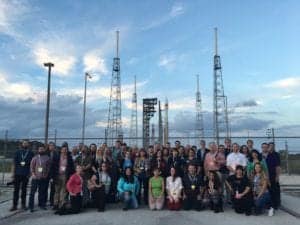
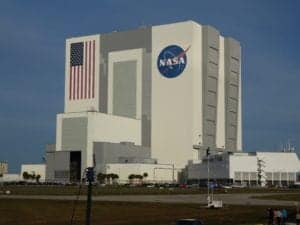

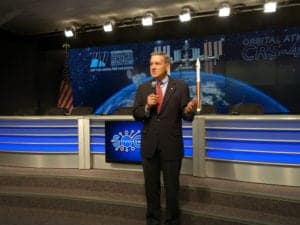
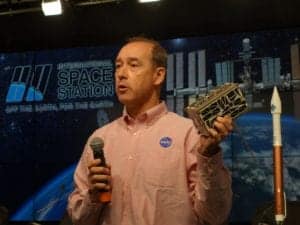
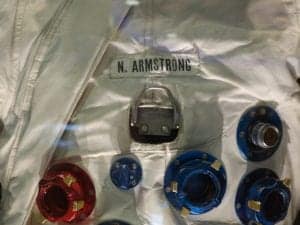
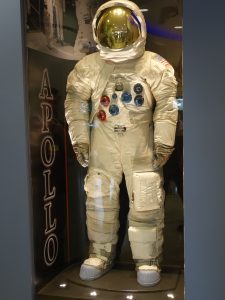






Hi Will
Thanks for such an informative dialogue ,,,,,,,,,,it , indeed has tweaked my interest in learning more and when I am in Florida in jan, will make a point of visiting the centre..
cheers R
Good deal. I left a ton out and you will not run out of amazing things to see at Kennedy Space Center.
Visited in May this year, Great place.
More people need to see it!